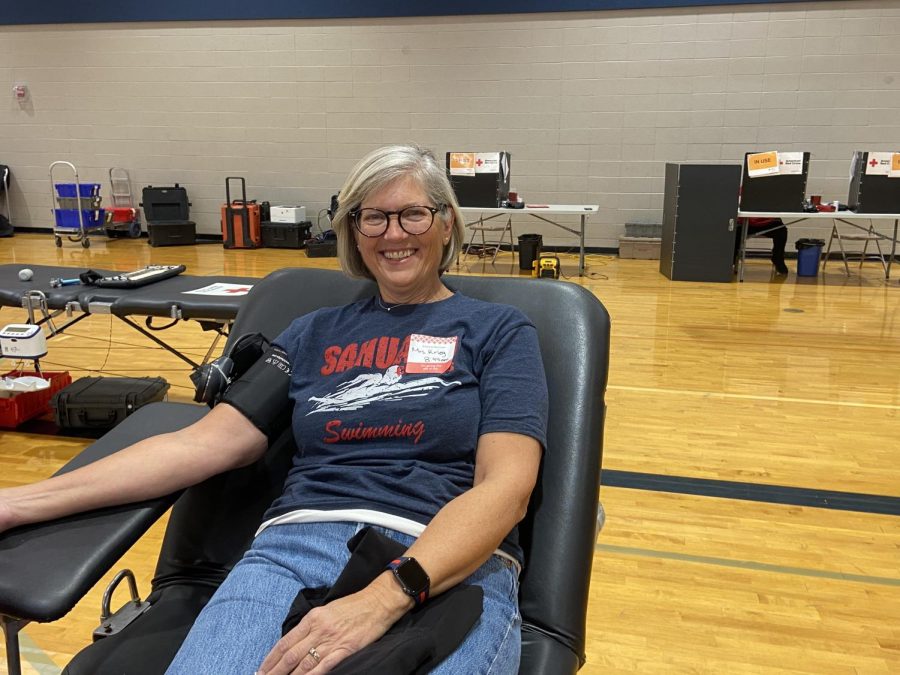Sahuaro Blood Drive 11/17/22
November 28, 2022
Donating blood helps save many lives and only takes 45 minutes to an hour, but less than 10% of people donate. When I asked Suzy with the American Red Cross why students should donate, she said, “Donating blood literally saves a life. You never know if someone in your family might need it.” People might fear needles, but Suzy’s advice was, “There’s nothing to be scared of, it’s one pinch then it goes away.” Suzy recommends people get into the habit of donating while they’re young.
Dela Edwards, a student donating her blood, was nervous. When asked why she wanted to donate blood, she said, “It saves a lot of people, and I also want to get rid of this fear. It’s scary to see the blood.”
Donating blood is simple. A stress ball or something similar is given to keep blood flowing before and during the process. Then the area is cleaned and the needle is inserted. The needle going in is described as a pinch for a second but goes away. After donating blood, it is important to stay hydrated before and after donating blood.
Students who donated were given snacks and a $10 dollar E-gift card.
StuCo club sensor, Alexis Trujillo reported, “We had 26 donors but only 15 whole bloods, and 1 power red for a total of 17 pints of blood.”
According to the American Red Cross website:
Facts About Blood Needs
- Every 2 seconds someone in the U.S. needs blood and or platelets.
- Approximately 29,000 units of red blood cells are needed every day in the U. S.
- Nearly 5,000 units of platelets and 6.500 units of plasma are needed daily in the U.S.
- Nearly 16 million blood components are transfused each year in the U.S.
- Sickle cell disease affects 90,000 to 100,000 people in the U.S. About 1,000 babies are born with the disease each year. Sickle cell patients can require blood transfusions throughout their lives.
- The average red blood cell transfusion is approximately 3 units.
- A single car accident victim can require as many as 100 units of blood.
- Blood and platelets cannot be manufactured; they can only come from volunteer donors.
- The blood type most often requested by hospitals is type O.
- One donation can help save more than one life.
- According to the American Cancer Society, more than 1.8 million people are expected to be diagnosed with cancer in 2020. Many of them will need blood, sometimes daily, during their chemotherapy treatment.
Donate blood!











